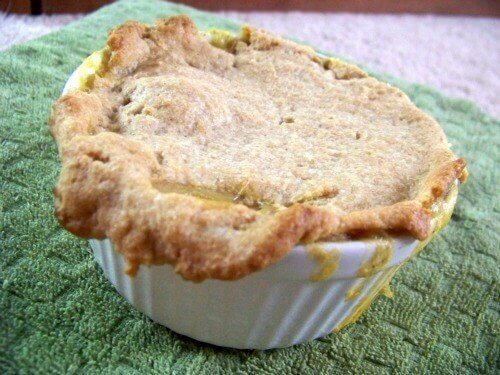Two hearty whole grain bread recipes
 For Frugal Fridays lately, I’ve been posting homemade bread recipes (a couple weeks ago I posted about making your own sourdough). The reason is simple. Baking your own bread is simply much, much cheaper than buying bread, if you want to buy anything of much quality (ie. better than Wonder Bread).
For Frugal Fridays lately, I’ve been posting homemade bread recipes (a couple weeks ago I posted about making your own sourdough). The reason is simple. Baking your own bread is simply much, much cheaper than buying bread, if you want to buy anything of much quality (ie. better than Wonder Bread).
Doing a very basic cost calculation (estimating high, just in case I’m off), and basing it on full price for my items (such as organic milk, which I try to buy on discount and free run eggs, which I don’t use in every loaf), I make very high quality, organic bread for $1.40 a loaf and in reality, it’s probably cheaper than that. Compare that to the $2.50-$4.00 it costs to buy a good loaf of organic bread in the stores, and it adds up very, very quickly.
I’ve received a few requests in the last couple of weeks for some hearty bread recipes, and although I have a couple, I was putting it off because there was something I wanted to accomplish with them first.
Many of you have heard me talk about how grains should be soaked, sprouted or sourdough- this ensures the best digestion and the most available nutrients. So, my goal was to turn these two unsoaked, yeasted bread recipes into soaked recipes, but unfortunately, I didn’t succeed at making the adjustments very well. I did make a couple loaves yesterday, and they turned out ok. Just ok. Not great, and nothing I want to share with all of you.
Since I’ve been really trying to incorporate the 3 S principles in my baking (just since this last fall), I have either made or bought sourdough, or bought organic sprouted, but yeasted bread, or just made these regular homemade recipes (not soaked). My understanding is that when learning these new baking techniques, such as in Nourishing Traditions, that is is easier to learn to do quick breads, pancakes and other grain dishes first, before attempting to move on to bread. I can accept that. If you’ve read my 100 things post, you might remember that baking is not my forte (I much prefer cooking).
With that upbeat intro, I now present to you my two best yeasted, whole grain bread recipes!
Whole Grain Bread (this recipe comes from my sister and brother-in-law, who also use spelt rather than wheat. It’s a little on the sweet side, but you could also lower the amount of honey a little bit and add a couple extra Tbsp of milk or water to make up for the loss of liquid)
Basic Whole Wheat Bread
(this comes from Bread Machine Magic, an older book full of over 100 machine specifically for the bread machine. There are many great recipes, but I like this one for its simplicity and consistently. It is also a good bread to make if you are starting out, or not used to eating whole grains, as you can gradually up the amount of whole wheat flour).
Basic Whole Wheat Bread
Ingredients
- 1/2 cup water if you have a Welbit/Dak machine, add 2 Tbsp more water
- 3/8 cup milk
- 1 egg
- 1 1/2 cups whole wheat flour
- 1 1/2 cups bread flour I use all whole grain flour, and have done it with wheat and spelt
- 1 1/2 tsp salt
- 1 1/2 Tbsp oil
- 1 1/2 Tbsp honey do the oil first, then the honey, and it will slide so easily off the spoon
- 2 tsp active dry yeast they recommend Red Star and I would agree
Instructions
- Place all ingredients in bread pan, select Light Crust setting and press start.
- Or, you can do what I have been doing lately, with excellent results, which is to make this bread on a dough cycle, then pull it out, knead very briefly and place it in an oiled pan. Let it rise until doubled (usually less than an hour), and bake in the oven at 375 F for about 30 minutes (I set my timer for 20 and check it, as I've only done this a couple times so far). Bake until nicely browned.
- After baking, remove bread from pan, place on cake rack and allow to cool for 1 hour before slicing (this is good practice whenever baking bread).



Thank you SO much for the recipes! I’m always looking for new recipes to vary things a little. I too am very interested in the whole soaking method, though I have to admit that I have absolutely NO knowledge about it right now. I’m looking into trying to find a copy of Nourishing Traditions myself. When you get the kinks ironed out, please please post the revised recipes! 🙂
Thanks for sharing those recipes. They look great.
When you say that you substitute oat flakes for the oat bran sometimes, do you mean oatmeal? Would that work? It is what I have in the house and I am not going to be anywhere that sells oat bran for a few weeks. Thanks!
Yes, I just mean regular oatmeal or rolled oats. That’s what I used yesterday, and my husband said it was just fine (I can’t try it because of my diet). It’s just like the fancy, grainy breads at the store that you see oatmeal flakes on. I’m all about substitutions! 🙂
Thanks for the recipes, Stephanie! I’ve been experimenting with the soaking method for whole grain bread (I use 1/2 hard red wheat and 1/2 spelt). The first time I tried it, it turned out super soupy. I had to add so much flour, it just seemed like a waste to me and the bread didn’t turn out at all. The second time I tried it, I just mixed everything together at once (minus the yeast and the vital gluten) and let it sit overnight. I figured that you’re probably not supposed to let the oil or honey soak with the bread, but it did turn out (probably the best loaf I’ve made…even over those I haven’t soaked). Do you know if it’s “bad” to soak the oil & honey with the grains overnight? (I didn’t know if it would make it go rancid, etc…)
Lauren, what I did the other day was to soak only the grains in a yogurt/raw milk mix. The next day I added everything else and mixed it, kneaded it, etc. I also had to add a lot of flour, and the texture just seemed off to me. It didn’t rise nearly as much as it usually does.
I actually just read something today suggesting that it’s helpful to mix it all together with the oil and sweetener, so it’s interesting that it worked well for you. I would worry about the oil going rancid as well, just sitting out overnight. Hmmm…
Obviously I need to keep researching this and experimenting with my breads. I’ll post about it as I figure out more of what works and doesn’t. I’d love to hear more of what you learn, too!
These bread recipes look really good! I’ve been reading through Nourishing Traditions, too, and now I’m hoping to try some other grains besides wheat!
Blessings,
Michele 🙂
http://www.frugalgranola.blogspot.com
Thanks for the recipes! I am 100% new to the bread-making thing and I tried the first recipe twice this weekend. Both times the loaves ended up about 2 1/2 inches high. Is that normal or did I do something wrong? I gave it extra time to rise both times, and I do believe it was doubled in size, like the recipe says. It tastes great, but is a little small for sandwiches.
Thanks!
Melissa – make sure you’re not using soft wheat because it doesn’t contain enough gluten to activate the yeast to rise. (I’m pretty sure that’s the reason.)Hard red or spelt work wonderfully, though!
Stephanie – I baked bread again and this time soaked the spelt & wheat with buttermilk together with the sweetener (I used a little agave & blackstrap molasses). I let it sit for 24 hours and then added the yeast, salt, oil, and vital gluten. And it turned out beautifully! So, I would recommend soaking everything together except for the oil, salt, yeast, and gluten (if you use it). It does rise REALLY fast though! I probably let it rise a little too high, so it fell a little, but it still turned out very well.
Melissa, I can think of a couple possible reasons why it didn’t rise as high as you’d like. The first is having old yeast, or not storing your yeast in the freezer or at least the fridge.
Another is the type of flour you use, as Lauren mentioned. I don’t have any really good whole wheat flour on hand, so I used some so-so stuff (with not enough gluten) yesterday, and my bread did rise, but it wasn’t as high as I prefer. One way to get around this is to add some gluten to your dough.
Also, I noticed when I made it that I knead it one extra time more than the recipe states (after the 10 minute rest, I knead it another 5 minutes before putting it in loaf pans). You could try doing this, or try kneading it longer than 8 minutes the first time (try more like 12). Also, check out this link, for some ideas of what may help bread that doesn’t rise enough:
http://www.thefamilyhomestead.com/faqbreadbaking.htm
Lauren, thanks for letting me know! That’s exciting, now I can’t wait to try it again!